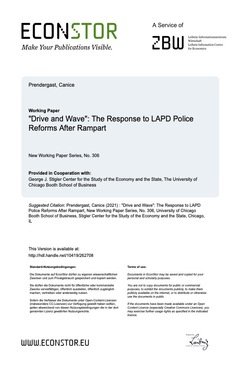"Drive and Wave": The Response to LAPD Police Reforms After Rampart
By Canice Prendergast
We study LAPD police reforms after the Rampart scandal, when formal oversight rose discretely in 1998, and then fell in late 2002. We offer a simple model to interpret how police behavior is affected by changed accountability to the public. We show how officers responded by a practice they labeled “drive and wave”. The arrest-to-crime rate fell 40% after accountability to the public rose, then rebounded to its original level when accountability fell. For the “victimless” crimes of narcotics and prostitution, arrests fall almost 50% and then rebound. No such effects arise for the Los Angeles Sheriff Department, even for those stations surrounded by areas policed by the LAPD. We also see no effects on arrests made by other agencies within the LAPD’s jurisdiction. This impact was greatest in predominantly Hispanic neighborhoods, and felt least in White communities. Other behavioral responses - use of force and street stops - tell a similar story. We argue that much of the response may be attributable to an imbalance between oversight done by suspects compared to that done by the victims of crime. We also document an impact on homicides.
Chicago: University of Chicago Booth School of Business, Stigler Center for the Study of the Economy and the State, 2021. 63p.


